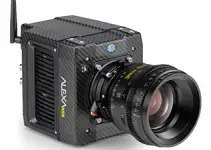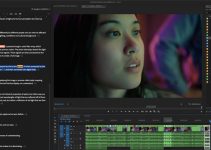One of the most common advises many professional editors would give young filmmakers is to try and find the best editor you know and the one you can afford to do the job for you.
Undoubtedly, this is a reasonable advice, however there are always some little tips and tricks that as independent filmmakers we can use from time to time in order to enhance our skills set and become better editors.
Unfortunately, there are many situations in real life where simply we can’t afford the best editor available at the time, so usually we are forced by the circumstances and the budget restrictions to do the job on our own.
In the next video US-based editing trainer Larry Jordan will give us some useful tips on how to improve our editing skills.
Highlights from Larry Jordan’s tutorial:
- When editing a series of non-dramatic images such as montage of beauty shots of music video for instance, pay close attention to matching the beat of the music
- When editing a series of dramatic images, try to edit the images to tell the story first, then add the music later.
- In general, the video provides the detail, the music provides the emotion!
- Pick the right transition – It’s essential to choose carefully the right transition depending on the mood and nature of your sequence. For instance, Dissolves are better for stand-alone images, while the Cuts are better when telling a story where shots relate to each other
Another conclusion Larry Jordan makes in the above video is that the dissolves could change the emotional connection among the different cuts and move the story into a whole new direction. As a rule-fo-thumb, one should pick and use the transitions wisely. Every editing decision should be motivated, however in many situations you should simply trust your instinct. This tutorial is part of the Larry Jordan’s Seminar “Editing as Story Telling” that examines how the craft of editing helps tell a story.
Further, it is save to say that all of the suggested tips and tricks could work in certain situations and be absolutely irrelevant in others. Every project should be approached differently with certain requirements and specifications in mind.
After spending some time with the same edit, it’s easy to become desensitized to the material. So it’s important to step back for a bit. Taking a break from an edit and returning with fresh eyes can help you maintain your sense of audience and help you do your best work.
When you work as a freelance editor keep in mind that most directors aren’t going to review each and every take in the edit suite. They will react to your cut based on whether or not it works for them and whether or not they like the performances on-screen. They will suggest changes and review one or two other takes to see if they really liked a different performance by the actor.
When you are editing your own project try to motivate yourself as you really have a director behind your shoulder. Don’t rush over the files, try different cuts, explore, choose carefully the best camera angles for each moment, don’t be lazy, follow the story and don’t be afraid to experiment, trust your unique vision.
At the end of the day, editing is a job like any other. If your really want to master the craft you should practice on a daily basis and should always doing it with passion and dedication.
Disclaimer: As an Amazon Associate partner and participant in B&H and other affiliate programmes, we earn a small comission from each purchase made through the affiliate links listed above at no additional cost to you.



